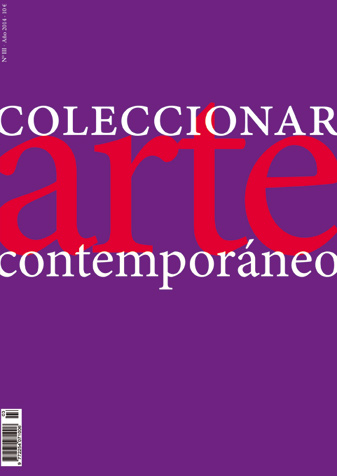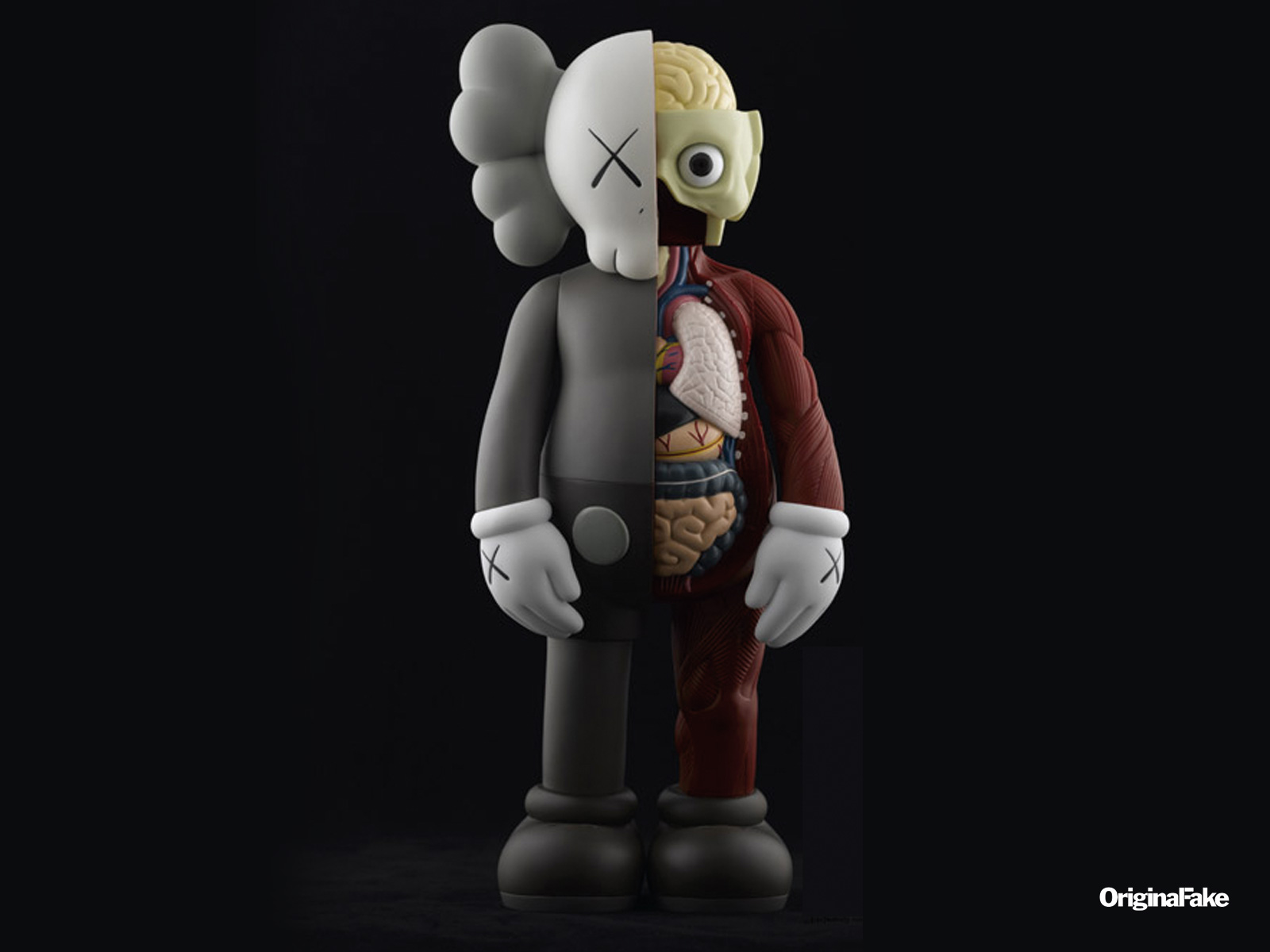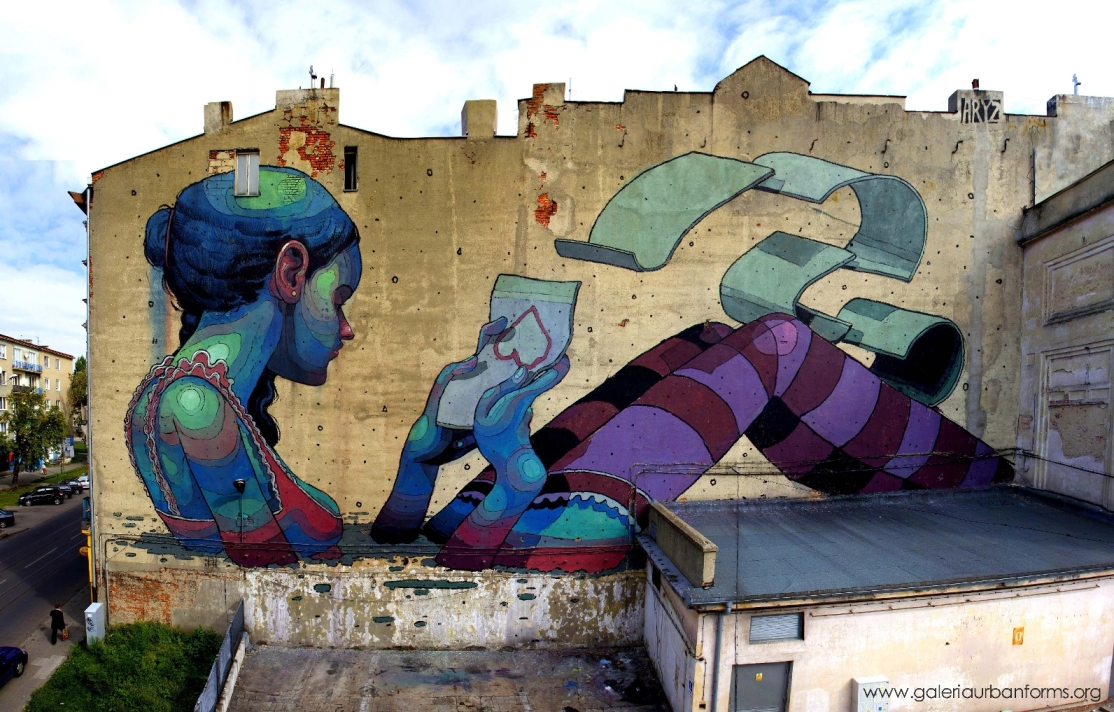Coleccionar Arte Contemporáneo es una publicación anual, que hace un análisis general del sector, informando a coleccionistas y público interesado, desde la perspectiva de diferentes figuras clave en el circuito artístico (Artistas, expertos en Inversión, comisarios, crítica, etc. ), sirviendo de guía para coleccionistas y gente afín. En su última entrega publica dos entrevistas con expertos en Arte Urbano, Arnaud Oliveux (Artcurial) y Anna Dimitrova (Nobulo, Montana Gallery).
En dichas entrevistas se habla de la evolución y estado del mercado del urban art, y se citan artistas básicos hoy (Kaws, Ludo, Os Gemeos, Banksy, Swoon, los más cercanos Sixeart, Suso33, Escif, Aryz, y figuras históricas como Futura, entre muchos otros)
¿Coleccionismo? ¿Arte Urbano? Hay quien pueda sentirse confuso, y con razón. Tal vez lo interesante aquí sea definir un poco la relación entre una cosa y otra.
Coleccionar Arte Contemporáneo is an annual journal, a general analysis of the sector , informing collectors and interested public from the perspective of various key figures in the artistic circuit ( Artists, investment experts , curators , critics, etc. . ), Serving as a guide to collectors and interested public. In his latest installment, published two interviews with experts in Urban Art, Arnaud Oliveux ( Artcurial ) and Anna Dimitrova ( Nobulo , Montana Gallery) .
In these interviews they talk about the evolution and status of urban art market, citing some basic artists ( Kaws , Ludo , Os Gemeos , Banksy , Swoon , nearby Sixeart , Suso33 , Escif , Aryz , and historical figures like Futura, among many others)
Collecting?? Urban Art?? Some people may feel confused , and rightly so. Perhaps the most interesting point we can make is defining the relationship between one thing and another .
Cuando hablamos de Arte Urbano,hablamos de una variante de las artes plásticas que por tradición, público (o más bien, por exponerse a todo el público a la vez), del «código interno» de la comunidad de artistas, y de miles de cuestiones más, (que darían pie a muchas interesantes conversaciones), siempre ha funcionado de una manera paralela al resto de movimientos artísticos contemporáneos, que normalmente tienen una relación más cercana con ferias, galerías, comisarios, coleccionistas, y demás piezas clave dentro de la difusión y venta de las obras.
El Arte Urbano, en su forma primitiva, no necesitaba galerías para exponerse, ni publicaciones para que la firma de los artistas fuese reconocible. Paradójicamente, dicha firma era una creación artística en sí misma, que servía a la vez como demostración de individualidad por parte de su autor y, al mismo tiempo, como forma de proteger su anonimato. Todo esto solamente podría ser calificado de anticomercial. Un movimiento esencialmente popular y espontáneo. Un poco contradictorio con el tema que tratamos, verdad? ¿Qué tiene esto que ver con una industria?
When we talk about Urban Art , we are talking about a variant of the plastic Arts that, because tradition, specific public ( or rather , by exposure to all the public at a time) , the » internal code » of the community of artists and thousands of more questions , (which would allow us to many interesting conversations ) , has always worked in a certain parallel way to other contemporary art movements , which typically have a closer relationship with fairs , galleries , curators , collectors, and other key factors in the distribution and sale of works.
The Urban Art, in its original form , did not need to be exposed at galleries , and recognision comes from the artist´s tag. Paradoxically , this tag was an artistic creation itself , which served both as a demonstration of individuality by the author and at the same time, as a way to protect their anonymity . All this could only be described as anti-business . An essentially popular and spontaneous movement. Slightly contradictory to the subject under discussion, right? What does this have to do with an industry ?
La clave: El mundo entonces no estaba aún globalizado, Internet mediante. Hablamos prácticamente desde finales de los 60 a finales de los 90. En ese mundo un graffitero de tu barrio ni se imagina que algún día podrá subir una foto de su última obra a algo llamado Instagram o a cualquier otro website, y que, con un golpe de suerte y oportunidad, será reconocido en el mundo entero. No. El artista de graffitti del mundo pre-internet actúa fundamentalmente en su ciudad, y sus obras son visibles fuera gracias a fanzines y a esporádicos viajes a otras ciudades, habitualmente dentro de una relación de comunidad con otros artistas.
De entre todos esos artistas unos pocos, muy pocos, por unos u otros motivos, casi siempre relacionados por la importancia de la ciudad-mercado en la que operan (NY y París son referencias ineludibles), se convierten en figuras reconocidas. Ésa circunstancia hace hoy, en 2014, básicos a los comisarios especializados y expertos en el tema, que son quienes investigan y recuperan el legado de dicha/s escena/s.
Sin embargo, siguiendo en 2014, la sociedad ha evolucionado vertiginosamente, al mismo ritmo que han evolucionado los recursos y formación de los artistas, y de una manera coordinada, cada vez más gente aprecia el arte urbano más allá de polémicas sobre vandalismo ¿Arte no no arte? y demás tópicos, y los artistas ofrecen más y más estilos y posibilidades técnicas. El público parece estar preparado, y el artista también. Así es como se crea un mercado.
The key: The world was not then even globalized ,Through Internet. We talk almost since the late 60s to late 90s . In this world, a graffiti writer in your neighborhood can not imagine that someday may upload a photo of his latest work to something called Instagram, or any other website , and, with a stroke luck and opportunity , will be recognized worldwide.No. graffitti artist of pre -internet world acts primarily in his city, and his works are visible outside through fanzines and occasional trips to other cities , usually within a relationship of community with other artists.
Of all those artists a few, very few , for one reason or another, mostly due of the importance of his hometown (NY and Paris are basic references) ,become recognizable figures . That circumstance makes basic the figure of specialized curators and experts, today, in 2014, who are investigating and recovering the legacy of these scene/s.
However, right now, in 2014, society has rapidly evolved at the same pace they have evolved the resources and training of artists, and in a coordinated way, more people appreciate street art beyond controversies about vandalism, Art not art ? and other clichés, and artists are offering more and more styles and technical possibilities. The public seems to be prepared , and the artist too. Here’s how a market is created.
El artista tradicional (no entendais esa expresión de manera despectiva ni irónica), es reconocido por que está dentro de un circuito establecido a lo largo de los años, que ha llegado a funcionar a base de mucho trabajo; galerías, publicaciones, agentes, comisarios, coleccionistas… Si el artista, o su obra, entran en dicho círculo, será éste el que se encargará de distribuirlos.
Y así sigue y seguirá funcionando, pero la explosión de Internet aporta un matiz absolutamente nuevo; piensa en los artistas urbanos que puedas considerar famosos o de éxito. Seguramente, si no fuese por Internet, no los conocerías. Son iconos de la primera fase del mundo conectado por Internet. Posiblemente la imagen de la campaña a la presidencia de Barack Obama sea el primer hito reconocible y perdurable para los libros de historia de ésta nueva era… Es arte pop, sí, pero ya existía antes de que la etiqueta «Arte Pop» fuese inventada.
The traditional artist (not in a derogatory or ironic way), it is recognized because is working into a circuit established over the years, created through hard work; galleries , publications, agents, curators, collectors … If the artist or his work ,goes into that circle , the circle will distribute them.
And this is how it works, and will still working , but the explosion of the Internet brings a totally new scenario; think about some urban artists that you can consider famous or successful . Surely, without Internet, would know not .They are icons of the first phase of the Internet -connected world . Perhaps the image of the presidential campaign of Barack Obama is the first recognizable and enduring milestone in the history books of this new era … It’s pop art , yes, but existed before the » Pop Art » label was invented.
Sí. De acuerdo. Es posible citar galerías de arte especializadas en Urban Art (Como pueda ser, aquí en España, Montana Gallery, o muchas las referencias en lugares como Francia), ferias nacionales e internacionales, artistas exitosos, y demás figuras citadas arriba. Pero, recordemos, dentro del (muchas veces endogámico) esquema tradicional del mundo de la producción, promoción y venta de arte, es un sector muy muy joven, cuyas posibilidades apenas están comenzando a mostrarse. Por eso es un gran síntoma que el Urban Art tenga representación en una publicación como Coleccionar Arte Contemporáneo. Es un síntoma que deja a las claras que se están asentando unos cimientos firmes sobre los que construir.
Yeah, right. You may quote specialized art galleries in Urban Art ( as it may be, here in Spain , Montana Gallery, or many references in places like France ) , national and international fairs , successful artists, and other figures cited above. But , remember, in the (often inbred) traditional scheme of world production, promotion and sale of art, Urban Art is a very young industry, in which the possibilities are just beginning to show. So it is a great sign that the Urban Art has representation in a publication as Coleccionar Arte Contemporáneo. It is a symptom that makes it clear you are settling a firm foundation on which to build.






